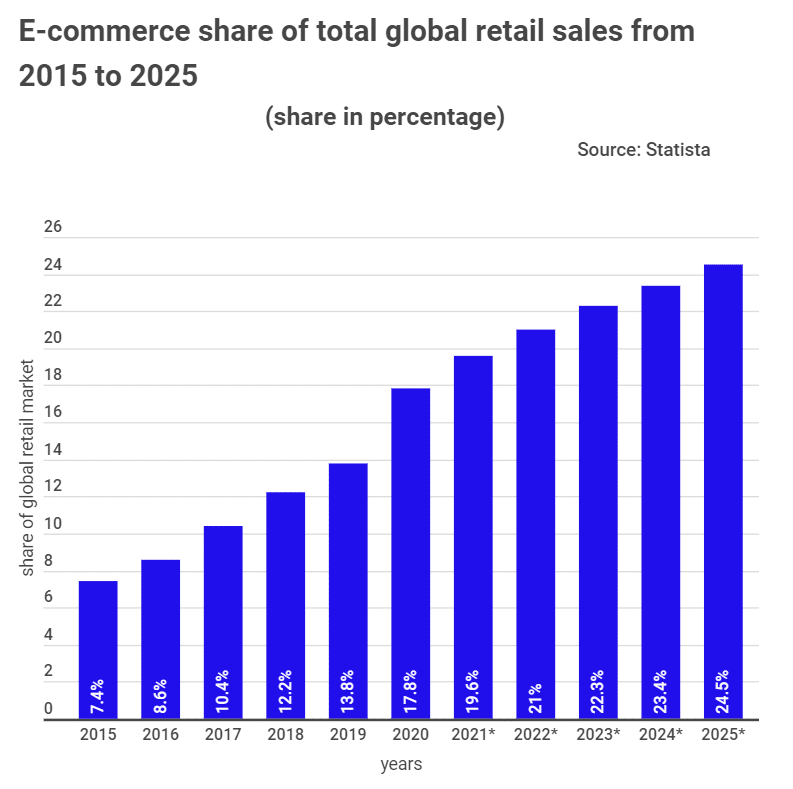E-commerce will make up a quarter of total global retail sales by 2025
E-commerce will make up nearly one-quarter of the global retail sales in 2025. That’s according to a Stockapps.com projection. The site has presented data suggesting that retail e-commerce sales will reach $7.4T. To do so, the sector will have to grow its 2021 figures of $4.9T by over 50% in the next four years.
“Today, we can tap into the benefits of online transactions thanks to the internet and digitalization of our lives,” holds StockApps.com’s Edith Reads. “The growing adoption and penetration of the internet has spurred a year-to-year increase in online buyers. For instance, 2020 saw over 2B consumers make their purchases online, pushing worldwide e-retail sales above $4.2 trillion.”

How has mobile adoption affected e-commerce traffic?
Mobile devices are becoming the go-to tools for e-commerce. In 2021 Smartphones facilitated about 70% of the worldwide visits to retail sites. As their adoption progresses, analysts project that mobile phones will shape future shopping experiences. M-commerce has already taken off across Asia. For instance, mobile traffic generates up to 65% of South Korea’s internet transaction volume.
Again market data revealed that India, Spain, and China have the fastest growing online markets. These are riding on their expanding digital developments buttressed by improving internet access in mobile-first online communities. Due to financial or infrastructural constraints, these have struggled for long with the regular fixed broadband connections. However, they now enjoy affordable mobile broadband connections.
Despite an uptick in mobile phone usage, desktop orders still dominate. But M-commerce is catching up, and as stated before, it is popular in Asia. By Q3 2018, Indonesia had the highest number of monthly users who’d bought anything via their phones. The study revealed that up to 75% of the Indonesians had done so. Other countries that ranked high in the metric are China, Thailand, South Korea, and Vietnam.
Who are the market leaders?
Online buyers are spoilt for choice regarding the platforms they can purchase from. Some of these target B2B clients only. On the flip side, there are many serving individual clients.
By 2019, online marketplaces accounted for the lion’s share of online buys worldwide. Here Amazon has remained the leader in terms of the traffic it attracts. In mid-2020, It attracted over 5.2B unique visitors, but its gross merchandise value (GMV) trails Taobao and Tmall of the Alibaba stable.
How has COVID-19 impacted e-commerce?
The COVID-19 pandemic has been a boon for the digital sales sectors in a twisted way. Containment measures, including lockdowns and restricted movements, increased the popularity of digital channels. Many took to them as alternatives to in-person shopping.
Market data shows retail e-commerce traffic hit a staggering 22B monthly visits. The majority demanded regular items, including groceries and clothes and tech items. Analysts opine that how COVID-19 progresses will significantly impact the global e-commerce and retail industry.
